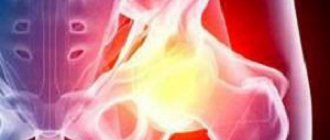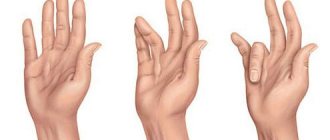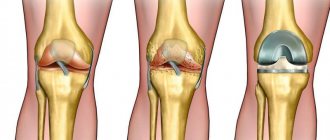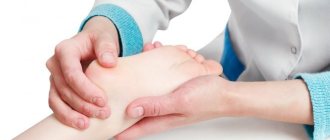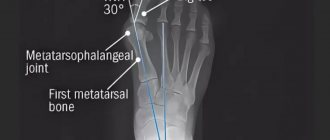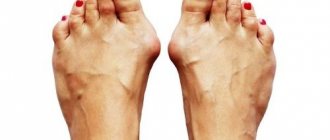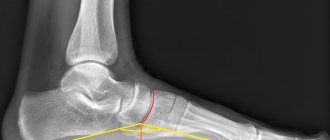Traditional treatment
Does iodine help with bunions?
08/08/2018 Arina Sokh No Comments
Hallux valgus is a specific disease that is accompanied by the appearance of bunions on the feet. They, in turn, cause a number of inconveniences, and at the last stage they can even cause a refusal to walk.
Modern medicine makes it possible to cure hallux valgus deformity both with the help of special devices and through surgical intervention. However, one should not discount traditional methods, which also bring a lot of benefits.
Traditional medicine and home treatment
What is a bunion and what are the causes of the disease?
Deformation of the metatarsophalangeal joint of the foot is a disease that has its own specifics. It is characterized by bone-shaped formations on the toes, as well as pronounced deformation of the joint of the first (big) toe (and other toes in later stages). The greater the angle of deviation of the first toe, the stronger the compaction of the bunions on the feet.
It is worth noting that this type of deformation is most often found in the fairer sex (men are 20 times less susceptible to this disease). Doctors identify several reasons for this:
- presence of excess body weight;
- wearing tight shoes, high heels, flat shoes, or other uncomfortable shoes;
- a history of trauma, fractures, or even wounds;
- increased load on the muscles and joints of the feet;
- presence of flat feet;
- genetic predisposition;
- problems with bone or musculoskeletal systems;
- complication after viral diseases and others.
Deformation of the metatarsophalangeal joint of the foot
There are actually many more factors that influence the appearance of deformity. These are just the most common ones.
Hallux valgus occurs in three stages. Traditional medicine, that is, treating the feet with therapy, namely treatment with iodine, will help with the first degree of curvature, when the bone is just beginning to form. Prevention of cones with iodine is also possible, which should be done at least twice a week.
Hallux valgus – conservative treatment methods
Hallux valgus (the so-called “bone” on the feet) is an outward deviation of the first toe. This pathology is very common, and it is provoked by many factors - weak ligaments, transverse flat feet, injuries, uncomfortable shoes. Women are more likely to get sick because they like to wear high-heeled shoes or pointed, narrow shoes. Dress shoes look elegant on a woman's foot, but their systematic use is extremely harmful to the feet. The disease progresses with age and as it develops, the symptoms become brighter, the pain is stronger, and the deformation of the foot becomes more significant. In the later stages, every step causes suffering, and aesthetically, the appearance of the legs is depressing. But thanks to modern treatment methods, today it is possible to help a patient with any degree of Hallux valgus. In this article we will focus on conservative methods that are indicated for the initial stage of the disease. They can stop the progression of the disease and significantly delay its negative consequences.
Signs and diagnosis of Hallux valgus
The diagnosis is made based on the patient's complaints and is confirmed by instrumental studies. Upon examination, a splayed foot and a deformity of the big toe, which is deflected at an angle to the rest, are visible. Possible hyperemia and slight pain on palpation of the protruding bone. To clarify the diagnosis, an x-ray is prescribed. An image of the foot evaluates the angle of deviation of the toe and the degree of its deformation. Based on what is seen, treatment is prescribed. It can be non-surgical in the initial stages of the disease, but if the deformation is significant, surgical intervention cannot be avoided.
Hallux valgus - how to treat without surgery
Conservative therapy for problems with the first toe is indicated in the initial stages of the disease, when it has not yet started, or in elderly people, when surgical intervention is not possible.
The goal of treatment is to prevent the progression of the disease by eliminating the pathological load on the feet.
Recommendations from specialists for conservative treatment:
- Use of assistive devices.
To relieve symptoms, numerous devices are used, which today are presented in a wide range in all orthopedic salons. Orthoses not only reduce pain, but also prevent the progression of the disease, bring the finger closer to its natural position and alleviate the patient’s condition. The most popular devices:
- special intertoe wedges, inserts, rollers - they take pressure on themselves, unloading the front arch of the foot, stimulate weakened muscles and correct the position of the joints;
- orthopedic abductor splints for the first toe have a similar effect to clamps, they help keep the toe in the correct position, but they are usually used at night, as walking in them is uncomfortable;
- Individual insoles are necessary for foot problems; they correct the arch of the foot;
At the European Center for Orthopedics and Pain Therapy, custom-made insoles are prepared from high-tech material using modern thermoplastic. Such insoles are in great demand; they relieve pain not only in the foot, but also in the spine, thanks to optimal functional parameters; They are universal and can be used with any shoes.
Of course, the effect of all auxiliary devices is limited, valgus cannot be completely corrected, but the listed orthoses and individual insoles still have a positive effect on the pathology, slowing down the process of deformation. They are very effective in the rehabilitation period after surgery. For maximum effect, they should be used around the clock, combining inserts, insoles and abduction splints.
- Gymnastics for legs.
Special gymnastics for the legs and feet strengthens the muscles, counteracting deformation. Rotating your foot in different directions, rolling a tennis ball with your sole, grasping small objects with your toes, and walking barefoot on an uneven surface are useful. Doctors at the European Center for Orthopedics and Pain Therapy will offer effective exercises with which the patient can train the leg muscles daily, keeping them in good tone. Such exercises are especially necessary for women who are forced to walk for a long time in high heels and dress shoes.
- Foot and toe massage.
In the initial stage of the disease, massage has a beneficial effect on the leg muscles. Regularly taking foot massage courses from an experienced specialist will help delay the progression of the disease. As a last resort, you can practice self-massage. The self-massage technique should be demonstrated by a doctor. Relaxing and stroking movements should be followed by intense rubbing. Particular attention is paid to the first finger - it is taken to the side, rotated, shaken, and beaten. An important condition for a positive result is the regularity of all procedures.
- Drug treatment.
Treatment with topical drugs improves the patient’s well-being, but their effect is temporary. Warming ointments and special patches have an analgesic effect and can reduce the inflammatory process. Warm baths with herbs, salt and iodine, essential oils, and compresses are beneficial. Their daily use before bed can prevent the progression of the disease, relax overworked muscles and improve well-being, but they cannot completely get rid of Hallux valgus.
- Physiotherapeutic effects.
Physiotherapeutic procedures help reduce inflammation and tone the ligaments. The doctor prescribes an individual course of physiotherapy:
- ultrasound;
- UHF therapy;
- inductothermy;
- magnetic therapy;
- heat therapy (paraffin therapy, ozokerite therapy);
- electrophoresis
- Choosing the right shoes.
Choosing the right shoes is very important. New shoes should be chosen in the evening, when the foot becomes wider and more swollen. High heels are undesirable; during the day it is better to wear comfortable shoes with stable heels and avoid prolonged walking or standing.
- Getting rid of extra pounds
Every extra kilogram is a serious burden on the spine and feet. It is necessary to normalize weight by reviewing the menu and changing your lifestyle. It is important to play sports or simply increase physical activity appropriate to your age.
If you start having problems in your foot, contact a specialist immediately! Doctors at the European Center for Orthopedics and Pain Therapy will make a diagnosis, expertly evaluate the pathology and recommend optimal treatment methods. You will be advised to use anti-valgus orthoses, special arch supports and orthopedic insoles made to individual parameters. Only if it is impossible to use conservative methods, surgical interventions will be offered that will return you to an easy and painless gait.
Benefits of iodine
Although many are skeptical about this type of treatment, this substance can actually be quite effective. Its main advantages are analgesic and anti-inflammatory effects. In addition, the iodine network warms the joint, disinfects the site of inflammation, which promotes:
- pain relief;
- relieving swelling and redness;
- protection against viruses penetrating from outside.
The main advantages are analgesic and anti-inflammatory effects.
The most effective is the treatment of bunions with iodine and aspirin. Aspirin, in addition to its own medical properties - relieving pain, thinning the blood, accelerating the production of thromboxane, which has a beneficial effect on the walls of blood vessels, strengthens them and protects them from damage - enhances the effect of the substance, thereby speeding up the treatment process.
In addition to external use, aspirin can be taken orally. However, before doing this, it is advisable to consult a doctor.
Rules for using iodine to treat a bunion on the leg?
Iodine should be used with caution as a traditional medicine to treat hallux valgus, since a concentrated composition applied directly to the skin can cause a chemical burn. To safely use recipes with iodine, it is important to follow simple rules:
- Before application, it is advisable to lubricate the skin with camphor, sea buckthorn or fir oil to reduce the aggressive effects of iodine on tissues;
- It is important to maintain precise proportions of individual ingredients for each recipe to avoid chemical damage to the skin;
- The use of iodine-based products for the treatment of bunions should be carried out over a long period of time - only in this case can one expect to achieve a therapeutic effect;
- To enhance the effect, after applying iodine to the bone, you can wrap your foot in cling film and put on a warm wool sock.
How to carry out the procedure
In order for iodine and aspirin to work more effectively, it is recommended to pre-prepare the feet for the procedures. It is not at all necessary to do this, but many note an increase in the effectiveness of treatment when performing such actions. The procedure is carried out for a week, then the legs are given a couple of days of rest (at this time you can use other means), then again they alternate a week of treatment with rest, and then, finally, they begin the final few days of treatment procedures. If no visible effect is observed, it is quite possible that your form of the disease is too advanced, and it would be more advisable to resort to surgical treatment.
In order for iodine and aspirin to work more effectively, it is recommended to pre-prepare the feet for the procedures
The procedure will take you from 15 to 20 minutes every day. First of all, you should wash your feet in clean water and steam them thoroughly. If this does not cause pain, you can carefully massage them in sore areas with your hands or with a washcloth. After water procedures and massage, dry your feet with a soft towel, continuing to massage them. To improve the penetration of the medicine into the thickness of the skin, it is recommended to apply camphor. It is applied not only to the cones themselves, but also to the area around them. This will also soften the irritating effect of the caustic substance on the skin.
The iodine-based product itself is applied using cotton swabs. The maximum frequency of the procedure is three times daily. Warm compresses will be helpful. They need to be done before bed. To do this, cotton pads are moistened with iodine, applied to the problem area and secured with bandages. Socks made from natural materials are worn on top.
How to remove a lump with iodine
The anti-inflammatory properties of this chemical element have long been well known to medicine. Almost everyone knows the simplest and most common way to use it - a mesh. It is recommended to use various iodine-based products once every few months, since the substance has a somewhat irritating effect and, if used carelessly, can lead to skin burns.
How to remove a lump with iodine
You can find many medications with iodine and other components that work well with the main symptoms of hallux valgus. In addition to products enriched with iodine, one should not forget about the methods of traditional medicine. They work great in combination with traditional therapy. The correct use of folk and traditional therapy will soon show its results and, perhaps, surgical intervention can be prevented or delayed for as long as possible. Before using iodine with aspirin for bunions, be sure to consult your doctor.
Iodine with dandelion
Traditional medicine knows many recipes containing various components to enhance the effect of the substance. One of these components is dandelion. To get rid of bumps on the legs using the flowers of this plant, approximately 100 grams of raw materials are placed in a clean, dry container and filled with a 5% solution of the drug. After approximately 5 days, the product is completely ready for use. The course of treatment will be 2 weeks. It is advisable to carry out the procedure in fresh air, wash your feet before it, and then dry them well with a towel.
Iodine with garlic
Another popular remedy for bunions is garlic. To prepare, take 5-6 cloves, and then place them in a bottle with the drug so that they are completely covered with the solution and can be thoroughly soaked in it. The seeds should be treated before bed because of the rather specific smell of the finished medicine. The course must be at least three weeks.
Iodine with garlic
Iodine with medical bile
For the treatment of hallux valgus, the affected bones are treated with medical bile immediately after applying iodine. In order to more evenly penetrate both substances into the skin, the leg is wrapped in polyethylene film, socks are put on and left overnight. During this time, both products will be perfectly absorbed and will significantly alleviate unpleasant symptoms.
Iodine with camphor oil
This is the simplest recipe for a bunion. There is no need to prepare solutions for this. The essence of the method is to alternately apply drugs to the sore spot. You can use camphor as mentioned above. Many patients respond positively to this method of treatment.
A mixture of aspirin and iodine
Aspirin with iodine for bunions on the feet has already become quite firmly established in folk therapy as a fairly effective remedy for deformation of the joint of the first toe. There are many recipes based on this mixture, many of which include some additional components. But first of all, attention should be paid to the main ingredients.
Iodine and aspirin for bunions - recipe and reviews
Iodine with aspirin has been famous for many decades as one of the most effective methods for treating bunions on the leg. In addition to the visible results, another important advantage of this method is its cost.
A mixture of iodine and aspirin is called a pharmaceutical cocktail. Making it at home is easy and very quick. To do this you will need: a 5 percent iodine solution and 5 aspirin tablets. All this can be found at your nearest pharmacy.
It is advisable to pour the iodine into a small bowl. Then crush aspirin tablets to a powdery consistency (important - there should be no large particles) and mix with 10 ml of iodine. Apply the resulting product with a cotton swab to the protruding bumps. You can make a compress from a cotton pad soaked in the mixture and put warm socks on top overnight.
Important: if you did everything correctly, the pharmacy cocktail will be discolored. To do this, buy only fresh drugs and carefully observe the proportions during production.
How is iodine used to treat bunions?
In folk medicine, several recipes are used for the treatment of hallux valgus using iodine. We will consider the most popular and effective below.
Tincture of iodine on dandelions
To prepare the product, you need to collect one hundred dandelion flowers and fill them with iodine solution. The product should infuse for 4 days. It should then be applied to the skin in the area of the bump. The tincture is applied to the bone in the form of an iodine network. It is advisable to steam the sore leg first. To achieve a positive effect, the procedure should be repeated daily for two weeks.
Iodine baths
A small amount of water (2-3 liters) is heated to a temperature of 36-37 ⁰C. Next, dissolve 2-3 tablespoons of salt in water and add 10 drops of iodine. The patient needs to immerse his feet in water and spend 15-20 minutes. Repeat the procedure daily for 10-14 days, then take a week's break and repeat the course of treatment.
Iodine-aspirin paste
To prepare such a paste, you need to grind 5-6 aspirin tablets. Add 50 grams of iodine to the resulting powder and grind the mixture to a thick paste. Iodine-aspirin paste is rubbed into the pathological area of the foot.
It is advisable to carry out the procedure at night. Then the leg should be wrapped in cling film and put on a warm woolen sock. The composition is used for a long time until a positive effect is achieved - i.e. until the bone disappears.
Iodine mesh
Camphor oil is applied to the surface of the skin in the area of the bone. Next, the skin is covered with an iodine mesh. The procedure must be repeated within 30 days. This contributes to the onset of remission of the disease.
Answering the question “Is it useful to lubricate a bunion with iodine?”, experts answer unequivocally in the affirmative. This allows you to relieve inflammation and pain, as well as reduce the severity of foot deformity. However, the greatest effect from such treatment can be obtained at the first stage of the development of hallux valgus. When the bone sticks out strongly enough, only surgery can remove it.
The effectiveness of traditional therapy
Many patients, after quite a long period of therapy, wonder whether iodine helps with bunions? Unfortunately, treating leg bumps with iodine and aspirin alone cannot relieve joint deformity. However, this is an excellent adjuvant that will perfectly complement complex therapy and significantly alleviate the unpleasant manifestations of the disease, such as pain.
Numerous reviews suggest that treating bunions with iodine and aspirin can still be useful in its own way:
- “I have been using iodine and aspirin as part of a pharmacy cocktail for several years. I carry out a course of treatment every year. I can say with confidence that the growth of the bones has noticeably stopped, and the pain no longer bothers me so often. In addition to this, I go for massages and consult with my doctor from time to time.”
- “For quite some time now, someone I knew advised me to treat diseased bones with analgin or aspirin mixed with a regular iodine solution from a pharmacy. I also use a special orthopedic corrector. The disease began to progress more slowly and less painfully. The foot hurts less, doesn’t become inflamed and hardly gets tired.”
The undoubted advantage of treatment with iodine solution is its antiseptic effect, which almost completely eliminates any infections that can further complicate the course of the disease. As the experience of many patients shows, the correct use of the drug, as well as products based on it, can significantly affect the course of treatment and the further course of the disease.
How to get rid of a bunion using traditional medicine
Plano-valgus deformity of the big toe, popularly known as a bunion, is a rather unpleasant disease accompanied by discomfort and pain. Of course, you can get rid of it with the help of surgery, but for many this is an extreme measure, which is resorted to in the later stages. If the disease is not advanced, then you can use folk remedies. However, you should not ignore such additional tools as:
- Special orthopedic shoes;
- Massage and physiotherapy;
- Therapeutic gymnastics.
Treatment of “bumps” on the leg with iodine
It can be used either alone or in combination with other substances. Due to its remarkable properties, iodine is not only an excellent antibacterial agent, but has also proven itself to be an excellent pain reliever. However, if the skin is hypersensitive, it is better to protect it from burns by applying camphor oil. Here are the most popular iodine-based recipes:
- “Mesh” applied to the pine cone;
- “Mesh” in combination with pharmacy bile. Bile is applied to the iodine mesh, and everything is covered with cotton wool and secured with a bandage. For proper effect, the procedure should be performed for a week at night.
- Iodine-dandelion compress. Iodine is added to dandelion flowers, and the decoction is infused for three days in a dark place. Then daily compresses are made from it for 7-10 days before bedtime.
Potatoes in the fight against a bunion
Not everyone knows how effective potatoes are in this case. And our ancestors knew recipes based on it.
Take one medium raw potato and grate it to a paste. And then this paste is applied to the foot.
A decoction for baths is prepared from fresh potato peelings. Take the peelings, fill them with water in a ratio of 1 to 3 and boil for 15 minutes. After this, one and a half glasses of broth are added to hot water, the feet are thoroughly steamed and wrapped in socks. Naturally, the procedure should be performed at night and preferably daily.
Effect on the bone with egg ointment
The ointment recipe is quite simple, although it will take some time to prepare. A chicken egg is placed in a jar and poured with vinegar so that it is completely covered. Then all this is infused for about two weeks in a dark place. During this time, the egg dissolves and after mixing, the same egg ointment is obtained. To make the effect stronger, you can add turpentine ointment (10 g) to the mixture. Application is typical for ointment - rubbing into the bone every other day. The course of treatment is from 30 to 35 days.
Honey medicine
Natural honey also helps if you have a bunion.
- Lubricating the pit with melted honey;
- Making a lotion from honey, mustard powder and sea salt. All components are taken in equal parts and mixed. This ointment should be applied to the deformed area and kept under cling film for half a day. Treatment should be regular and last at least 30 days.
Using Clay
- To make a compress you will need red clay (50 g), turpentine (6 drops), sea salt (25 g) and boiled water (250 ml). Everything is mixed and applied to the pine cone. After the clay becomes hard, the compress should be changed.
- To make a solution, you need to take blue clay (4 tablespoons) and hot nettle infusion. The ingredients are mixed and kept in a steam bath for about 15 minutes. The result is a saturated solution, with which you need to moisten gauze folded several times and wrap it around your foot. Cover the top of the compress with foil for 20 minutes. The frequency of performing this procedure is from 3 to 5 times a week.
- A foot bath is prepared according to the following recipe: take 100 g of oak bark and pour 3 liters of hot water. Then keep the broth in a steam bath for 20 minutes, cool and filter. After this, you need to add half a glass of clay to it, mix it and pour it into a basin to warm your feet.
Author: K.M.N., Academician of the Russian Academy of Medical Sciences M.A. Bobyr
